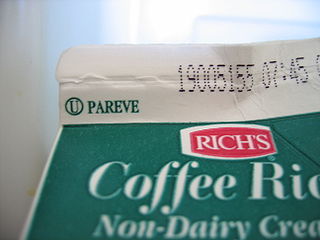 W
WKosher animals are animals that comply with the regulations of kashrut and are considered kosher foods. These dietary laws ultimately derive from various passages in the Torah with various modifications, additions and clarifications added to these rules by halakha. Various other animal-related rules are contained in the 613 commandments.
 W
WChelev, or what is also known as "suet", is the animal fats that the Torah prohibits Jews and Israelites from eating. Only the chelev of animals that are of the sort from which offerings can be brought in the Tabernacle or Temple are prohibited. The prohibition of eating chelev is also, in addition to the Torah, one of the 613 commandments that, according to the Talmud, were given to Moses on Mount Sinai.
 W
WGid Hanasheh, often translated as "displaced tendon," is the term for sciatic nerve in Judaism. It may not be eaten by Jews according to Halacha. The laws regarding the prohibition of gid hanasheh are found in Tractate Chullin, chapter 7.
 W
WMordechai E. Kislev is an Israeli emeritus professor in the Mina and Everard Goodman Faculty of Life Sciences at Bar-Ilan University, specializing in archaeological botany. Some of his prominent research focuses on prehistoric early agriculture and archaeological entomology. Other works explore the ancient landscape of the Land of Israel, as well as Torah and Science issues.
 W
WA mashgiach is a Jew who supervises the kashrut status of a kosher establishment. A mashgiach may supervise any type of food service establishment, including slaughterhouses, food manufacturers, hotels, caterers, nursing homes, restaurants, butchers, groceries, or cooperatives. The mashgiach usually works as the on-site supervisor and inspector, representing a kosher certification agency or a local rabbi, who actually makes the policy decisions for what is or is not acceptably kosher. Sometimes the certifying rabbi acts as his own mashgiach; such is the case in many small communities.
 W
WIn kashrut, the dietary laws of Judaism, pareve is a classification of edible substances that contain neither dairy nor meat ingredients. Food in this category includes all items that grow from the ground, fish, eggs, and non-biological edible items. Kashrut forbids consuming mixtures of milk and meat, consuming milk and meat at the same meal, consuming dairy foods within a period of time after consuming meat, and using the same dishes for both dairy and meat. Pareve foods, being neutral, can be consumed with either dairy or meat.
 W
WIn Judaism, shechita is slaughtering of certain mammals and birds for food according to kashrut.
 W
WThe Slaughter of Poultry Act 1967 was a piece of UK legislation that provided for the humane slaughter, for certain commercial purposes, of poultry. Exemptions were made for slaughter by kosher and by halal means.